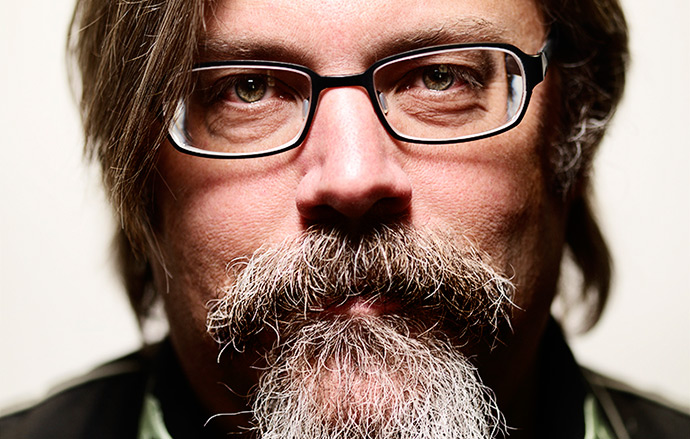
After Prohibition virtually extinguished America’s rich cocktail culture, mixology entered a bleak age of sour mix, cranberry juice, and abuse of the “-tini” suffix. But thanks, in part, to cocktail historian David Wondrich, many of the recipes from bartending’s Golden Age are alive and well once more. Below, Wondrich, who is a nominee for our Outstanding Wine, Beer, or Spirits Professional award, tells us about his latest project, favorite new bars, and first non-liquid food memory.
--
JBF: You've been tapped to write The Oxford Companion to Spirits and Cocktails. How is that going? Is there an ETA?
DW: It's a huge job, that's for sure, but I'm already learning a great deal. We're trying to bring all kinds of Asian and African spirits into the discussion, from arrack to akpeteshie, baijiu to bukha. I've really just begun working on it—I've got a list of headwords and we're figuring out who will write what. It'll take a couple of years, but I hope it will be worth the wait.
JBF: What are some recent books or essays on beverages that you've enjoyed lately?
DW: I just finished Moscow to the End of the Line, an absolutely bonkers piece of Soviet clandestine samizdat from 1968 by Venedikt Erofeev, in which the narrator—Venedikt himself, fictionalized—gets utterly loaded on vodka and various other, dodgier Russian drinks and rides the Moscow subway. An education in Soviet drinking, and very funny (and sad) to boot. I've also been digging into the massive report that the British Royal Commission on Whiskey and Other Potable Spirits made on the British booze industry back around the turn of the last century. All kinds of odd details buried in there, such as the fact that most of the leading Irish pot-still whiskeys were made not just with barley, as they are today, but with barley, oats, and rye.
JBF: It's been a few years since we were last in touch with you, and a ton of great new bars have cropped up all over the country since then. Can you tell us what you're enjoying from the latest generation?
DW: Oh, Lord. There are so many! A few that pop into mind: Tooker Alley and the Dead Rabbit here in New York, Smuggler's Cove in San Francisco, Libertine in Indianapolis, the Franklin Mortgage & Investment Co. in Philadelphia, Williams & Graham in Denver…I could go on.
JBF: What are the bars in New York City that you find yourself returning to again and again? What do you drink there?
DW: I've been going to McSorley's at least since I was 18; there, I drink beer—and eat cheese, crackers, and onions. My locals are the impeccable Clover Club on Smith Street in Brooklyn, where I drink New York Sours and other classics; and Berlyn, a little German restaurant across the street from BAM, where they have a lovely little bar with fine cocktails. I also spend a lot of time at the venerable Pegu Club on the edge of Soho, because it's always so pleasant and the house cocktail is so damn refreshing.
JBF: There's been a huge distilling boom in this country over the past few years. Which new-wave spirits do you like?
DW: I've liked some of the Balcones whiskeys from Texas. The Krogstadt aquavit from Oregon is quite remarkable. Ransom distillery, also in Oregon, is run by an old friend of mine and he keeps sending me samples of fascinating stuff, as does my friend Allen Katz of the New York Distilling Co. here in Brooklyn.
JBF: Last question: what's your earliest food memory?
DW: My father was born in Trieste and we used to spend a lot of time there when I was little. Therefore the earliest things I remember loving are Parmigiano-Reggiano cheese and mortadella. You could do a lot worse.
About the author: Anna Mowry is senior editor at the James Beard Foundation. Find her on Twitter and Instagram.






